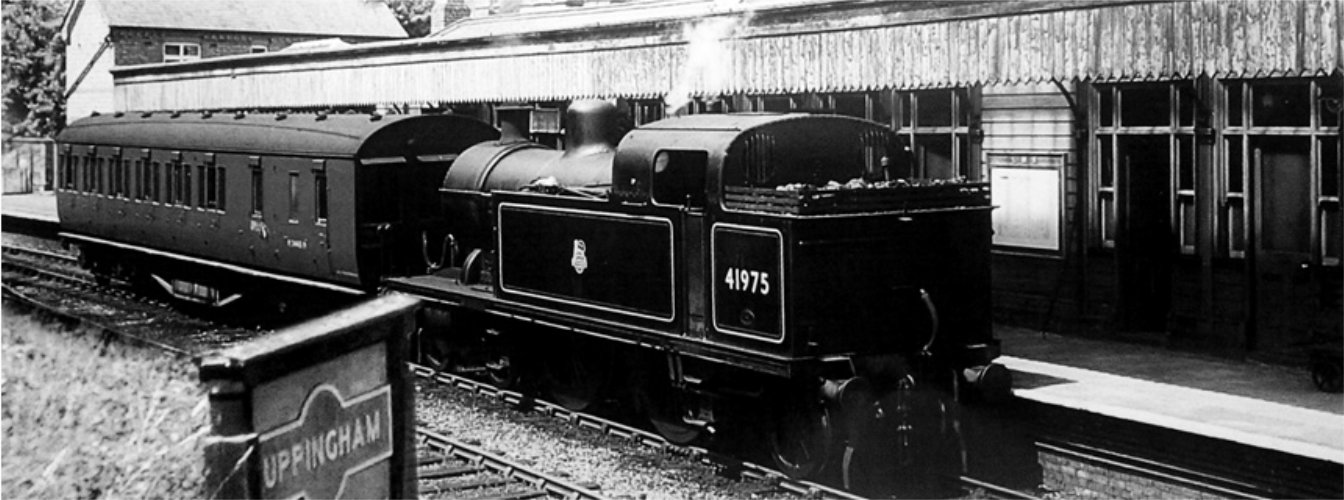
Uppingham Railway Station
The Station was situated t below and slightly to the east of the information board. Station Road still exists, but now takes you to the replacement industrial estate on the site of the station and the railway line. The Installation to the left of the board was funded by an Arts Council grant and is a representation of a typical LMS engine that worked this line
The 3 ¾ mile branch line from Seaton Junction to Uppingham opened in 1894 for both goods and passenger traffic. Seaton Junction was the gateway to the rest of England’s main line system. The Station was situated almost below and slightly to the east of the information board. The Installation to the left of the board was funded by an Arts Council grant and is a representation of a typical LMS engine that worked this line
As usual, change is always hard to accept. At the time some Uppingham residents resented this ‘drastic modernisation’ as they feared that it would take away their trade!
The single line was operated by the London & North Western Railway Co., but in 1923 it was taken over by the London, Midland & Scottish Railway. The service was used regularly by Stamford School pupils; and a ‘special’ was operated at the beginning and end of term for the boys (as it was then) of Uppingham School. The homeward journey for many left Uppingham at 6.35am, arriving at Euston at 10.12am.
For many years the line was an essential element of the social and economic framework of the town. In the 1920s members of the parish Church Choir travelled by train on their annual outing to Skegness, a popular destination in those days for a day at the seaside. Others used to take the train in the summer to Seaton in order to go swimming in the River Welland near Harringworth.
The line offered a flexible freight service with parcels being delivered by lorry to all the tradesmen of the town and to households in Uppingham and the surrounding villages. One local farmer remembered day old chicks arriving in special boxes from the hatchery by rail, and bundles of cabbage plants being delivered similarly from Lincolnshire.
Shortly after her family’s move to Uppingham in 1957 a lady recalled her delight at seeing their two-seater Austin 7 sitting in the open truck of the goods train which had delivered it safely to the station.
This interesting snippet indicates the growing use of motor transport both for passengers and freight from the 1950s onward which meant that closure in 1964 under the ‘Beeching Axe’ was inevitable. The station buildings were mostly demolished, although one remnant and the weighbridge remain. Details of the station layout can be found under the ‘Museum’ tab of this web site.
Details provided by Roy Stephenson. Further information can be found in the book ‘Uppingham in Peace time’ published by the Uppingham Local history Study Group and available as a download.





